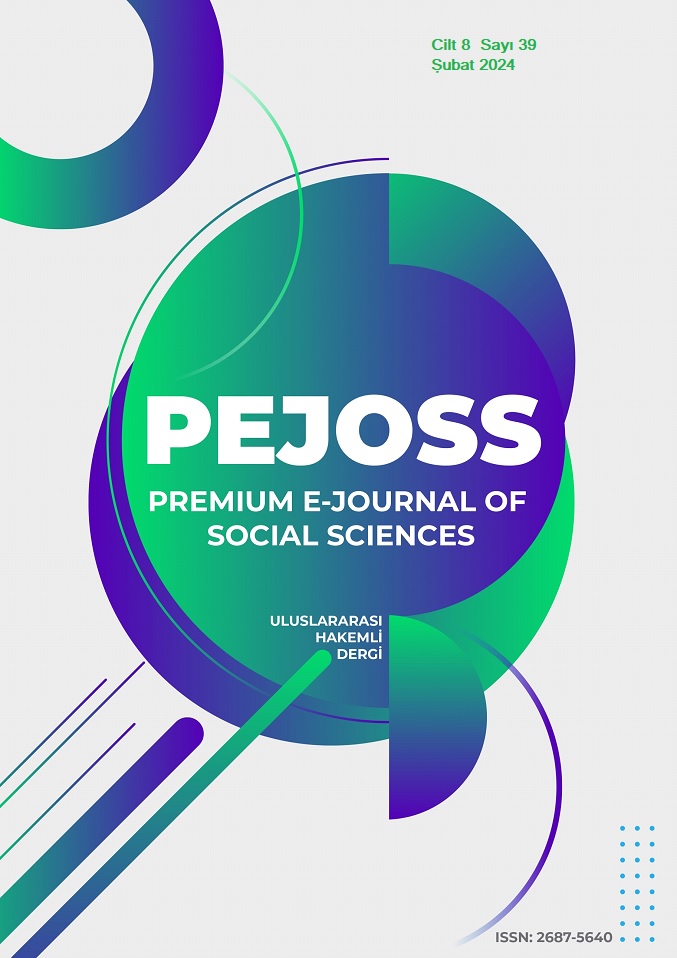Determining The Health Literacy Levels Of Teachers: The Case Of Isparta
DOI:
https://doi.org/10.5281/zenodo.10759905Keywords:
Isparta, Literacy, Health, Teacher, Health literacyAbstract
This study aimed to determine the health literacy levels of teachers working in public schools in Isparta city center. The research was conducted between 08.08.2022 and 14.08.2022 with 431 teachers working in official primary and secondary schools affiliated with the ministry of national education in the central district of Isparta province. Turkey health literacy scale-32 was used to determine the health literacy levels of the participants. As a result of the research, it was seen that the highest level of knowledge of teachers about health literacy was in the dimension of "using and applying health-related information" in the field of "treatment and service", while the dimension with the lowest level of knowledge was in the dimension of "prevention of diseases / promotion of health". It was observed that there was a dimension of "evaluating health-related information. When the correlation analysis results applied to the dimensions in this research were examined, it was determined that there were positive significant relationships among all dimensions. When the participants' age, gender and whether they had been vaccinated against COVID-19 were examined, it was seen that there was a significant difference, but there was no significant difference between their marital status, professional experience, education level and the institution they worked for.
Downloads
References
Adams, R. J., Appleton, S. L., Hill, C. L., Dodd, M., Findlay, C., & Wilson, D. H. (2009). Risks associated with low functional health literacy in an Australian population. Medical Journal of Australia, 191(10), 530-534.
Aslantekin, F., Uluşen, M., Kaplan, B., & Uysal, M. (2013). An evaluation of health literacy situations of patients with type 2 diabetes. Medical Journal of Islamic World Academy of Sciences, 21(3), 105-114.
Avcı, Y. D. (2016). Kişisel sağlık sorumluluğu. TAF Preventive Medicine Bulletin, 15(3), 261-263, https://doi.org/10.5455/pmb.1-144549488.
Ay Ertem, Ü., Özcan, N., Ören, B., Işık, R., & Sarvan, S. (2007). Temel Hemşirelik. Medikal Yayıncılık.
Bilir, N. (2014). Sağlık okur-yazarlığı. Turkish Journal of Public Health, 12(1), 61-68.
Filiz, E. (2015). Sağlık Okuryazarlığının Gebelik ve Sağlık Algısı ile İlişkisi. [Yayınlanmamış Doktora Tezi]. (422844), Sağlık Bilimleri Enstitüsü, Selçuk Üniversitesi.
Harrison, J. K. (2008). Science education and health education: locating the connections. Studies in Science Education, 41(1), 51-90.
Isparta İl Milli Eğitim Müdürlüğü (2023). Öğretmen İstatistikleri. https://www.isparta.meb.gov.tr.
Kalaycı, Ş. (2010). Spss Uygulamalı Çok Değişkenli İstatistik Teknikleri. Asil Yayın Dağıtım.
Karabulut, M., (2021). Öğretmenlerin Geleneksel/ Tamamlayıcı Tıp Uygulamalarına Yönelik Tutumu ile Sağlık Algısı ve Sağlık Okuryazarlığı Arasındaki İlişki [Tıpta Uzmanlık Tezi]. (702728), Sağlık Bilimleri Enstitüsü, Afyonkarahisar Sağlık Bilimleri Üniversitesi.
Kurudayıoğlu, M., & Tüzel, S. (2010). 21. yüzyıl okuryazarlık türleri, değişen metin algısı ve Türkçe eğitimi. Türklük Bilimi Araştırmaları, (28), 0-298.
Nutbeam, D. (2000). Health literacy as a public health goal: a challenge for contemporary health education and communication strategies into the 21st century. Health promotion international, 15(3), 259-267.
Nutbeam, D. (2008). The evolving concept of health literacy. Social science & medicine, 67(12), 2072-2078.
Okyay, P., Abacıgil F., & Harlak, H. (2016). Türkiye Sağlık Okuryazarlığı Ölçeği (TSOY-32) T.C. Sağlık Bakanlığı. Anıl Matbaa.
Parker, R. M., Baker, D. W., Williams, M. V., & Nurss, J. R. (1995). The test of functional health literacy in adults: a new instrument for measuring patients’ literacy skills. Journal of general internal medicine, 10, 537-541.
Parker, R. (2000). Health literacy: a challenge for American patients and their health care providers. Health promotion international, 15(4), 277-283.
Ratzan, S. C. (2001). Health literacy: communication for the public good. Health promotion international, 16(2), 207-214.
Sorensen, K., Van den Broucke, S., Fullam, J., Doyle, G., Pelikan, J., Slonska, Z., & Brand, H. (2012). Health literacy and public health: a systematic review and integration of definitions and models. BMC public health, 12(1), 1-13.
Speros, C. (2005). Health literacy: concept analysis. Journal of advanced nursing, 50(6), 633-640.
Şişko, E. (2021). Lise Öğretmenlerinde Sağlık Okuryazarlığının Dumansız Hava Sahası Tutumu ile İlişkisi. [Yayınlanmamış Yüksek lisans tezi]. (684158), Sağlık Bilimleri Enstitüsü, Ege Üniversitesi.
Tekin, A. (2007). Sağlık-Hastalık Olgusu ve Toplumsal Kökenleri (Burdur Örneği). [Yayınlanmamış Doktora Tezi]. (207323), Sosyal Bilimler Enstitüsü, Süleyman Demirel Üniversitesi.
TDK (2019). Türk dil kurumu sözlükleri. https://www.tdk.gov.tr
UNESCO (2008). The Global Literacy Challenge, A profile of youth and adult literacy at the mid-point of the United Nations Literacy Decade 2003–2012. https://unesdoc.unesco.org/images/0016/001631/ 163170e.pdf.
Yazıcıoğlu, Y., & Erdoğan, S. (2004). SPSS Uygulamalı Bilimsel Araştırma Yöntemleri. Detay Yayıncılık.
Yılmazel, G. (2014). Çorum İl Merkezı̇ndeki İlköğretı̇m Öğretmenlerı̇nde Sağlık Okuryazarlığı, Hı̇pertansı̇yon Farkındalığı ve Kontrolü Arasındakı̇ İlı̇şkı̇. [Yayınlanmamış Doktora Tezi]. (390773), Tıp Fakültesi Halk Sağlığı Anabilim Dalı, Erciyes Üniversitesi.
Downloads
Published
How to Cite
Issue
Section
License
Copyright (c) 2024 Premium e-Journal of Social Science (PEJOSS)

This work is licensed under a Creative Commons Attribution 4.0 International License.


